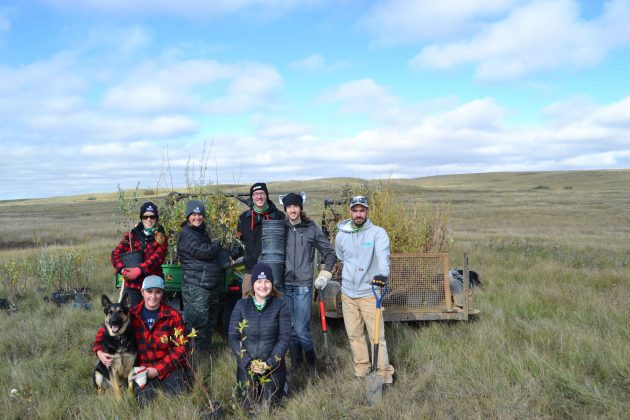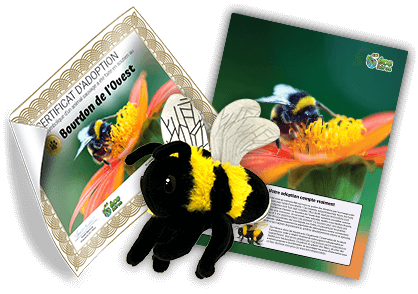The western bumblebee is what we call a habitat generalist—a species able to thrive in a wide variety of environmental conditions and ecosystems, from subalpine and montane habitats to open forests and prairie grasslands. Once considered one of the most common and widespread bumblebees in western Canada, this species has experienced a significant decline in recent years due to cumulative habitat loss and fragmentation as a result of increasingly intensive agriculture, pesticides, and other land use practices.

A Busy Life!
A bumblebee’s life starts with the queen of the hive. She’s the only bee to survive the winter (she hibernates through the cold months), and in the spring she has one job: to find the perfect place to lay her eggs and start building a new colony. Popular areas for bumblebee nests are under buildings (like sheds) and in abandoned rodent burrows. The first eggs the queen lays develop into female worker bees. They help by collecting pollen and nectar, and taking care of the larvae and the nest. Later in the season, eggs develop into male bees and new queens. These queens survive the winter, starting the cycle over.

Bee-ing Helpful
We’re working hard to bring the western bumblebee back to southern Saskatchewan by teaming up with Nature Conservancy Canada (NCC). By adopting a western bumblebee through the Earth Rangers App, you’ll help NCC purchase land that has been used for farming and transform it back into bumblebee habitats—that means planting native flowers, creating nesting spots and protected areas for overwintering. NCC will also help to educate people in Saskatchewan about how they can help the western bumblebee through their Conservation Volunteer and Indigenous Youth Education Programs.
Learn how you can adopt these species and many others by downloading the Earth Rangers App today!
Proudly supported by:

In collaboration with:


